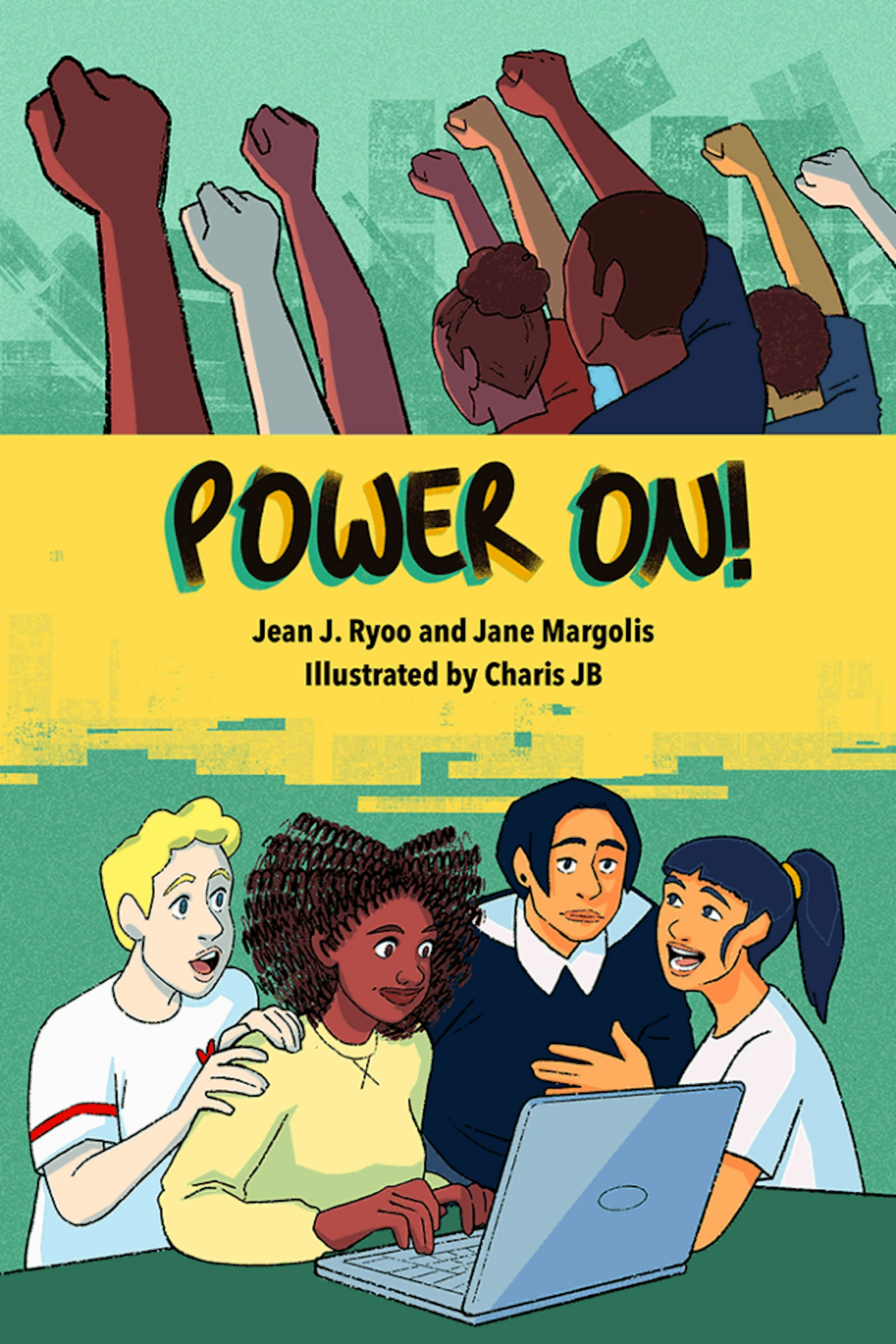Innovative publication shines a light on bias, lack of representation in technology, encourages engagement of young people in computer science.
Computers and technology and our interactions with them impact almost all aspects of our lives. But often, these interactions take place on a playing field that is not neutral or objective and often biased.
To address the challenge, Jean Ryoo and Jane Margolis, long time collaborators and UCLA Center X researchers, along with artist Charis JB, have teamed up to produce “Power On!” a groundbreaking graphic novel that shines a bright and innovative light on the issues of representation and participation in computer science and technology.
Their work confronts a growing problem with significant consequences. As the organization Public Citizen said in a 2021 report, “Algorithms systematically and disproportionately harm Black and Brown communities by restricting opportunity and access.” Such bias they add leads to discrimination and harm for communities of color, women, trans people, and gender non-conforming individuals.
“As in society, bias, discrimination and a lack of representation are pervasive in the realms of technology and computer science and we are not immune to their corrosive force,” says Jane Margolis, a senior researcher at UCLA Center X. “Unless and until we have wider representation at the design table – with women, people of color and especially young people able to participate in the design and creation of technologies, our opportunities will remain constrained, the playing field unfair.”
Based on research and inspired by young people and educators, “Power On!” tells the story of how a diverse group of teenage friends learn how computing can be personally and politically empowering and why all students need access to computer science education.
In the novel, students Taylor, Christine, Antonio, and Jon are typical young teens, using tech to communicate endlessly by text, share jokes and their worries about starting high school, and support each other. But when a racially-biased artificial intelligence system causes harm in their neighborhood, they realize that technology isn’t as neutral as they thought it was. They begin to wonder; can an algorithm be racist? And what is an algorithm, anyway?
In school, the teens decide to explore computing classes, but their classes and options are limited. One class is only about typing. Another is full. But Antonio has a class that offers a meaningful exploration of computer science, and Christine finds an informative after-school program, and they teach the others what they learn.
The challenges the teens in the novel face in finding access to classes in computer science reflect the realities young people confront in accessing meaningful instruction in computer science. Computer science is only taught in 51% of the nation’s high schools, and is least likely to be taught in schools with high numbers of students of color or in rural areas. (Code.org report). And in California, home to Silicon Valley, only 3% of high school students are enrolled in computer science (CSforCA)
The story follows the teens’ journey as they grow more aware of how technology can perpetuate racism and inequality, and gradually come to understand that their voices and perspectives, and those of women, people of color, LGBTQ+, and immigrant communities, are not reflected by those who run big technology companies and are creating the technologies they use. By summer vacation, the four teens have come to understand that computing is tremendously important to their personal lives and political empowerment, and they decide to use what they’ve learned to take a stand for all students to learn computer science.
“We wrote ‘Power On!’ to provide an accessible educational tool for informing and encouraging discussion of pressing issues of equity and ethics in technology, and to motivate more young people, regardless of their career path to learn about computer science,” Ryoo said.
“The voice and perspective of young people deserves and needs to be heard in technology-related fields, yet too often youth find that the technology they use every day promotes practices that keep them marginalized and without a seat at the table. We hope this book will help to change that,” she adds.
Informed by decades of educational research and the feedback of young readers, the authors hope that “Power On!” will not only serve as a resource for learning about computer science and computing education, but that it will spark a conversation about the ethical complexities of technology and why young readers need the knowledge to be critical creators of technology, not merely users who are shaped and controlled by it.
To encourage and support that conversation, the graphic novel will be published with a free guide for educators addressing critical questions such as, ‘What are ways that technology is creating social good as well as harm, why does representation of students of color and females matter, and what can be done to change underrepresentation? The authors are collaborating with Computer Science Teachers Association Equity Fellows to develop these facilitator resources for “Power On!”
“’Power On!’” translates decades of educational research about the inequalities in computing education into graphic novel form, bringing to life why youth readers deserve and need the knowledge to be critical creators with technology, not merely users who are manipulated by it,” says Margolis.
Ryoo adds that, “Bias, discrimination and lack of representation are critical problems in technology. Young people are the key to solving the challenge. They need to be at the table where decisions are made. We hope this book will help them to get there.”
“Power On!” is published by the MIT Press. The book is available beginning April 19, 2022.
And be sure to check out the video trailer about “Power On!” here.
